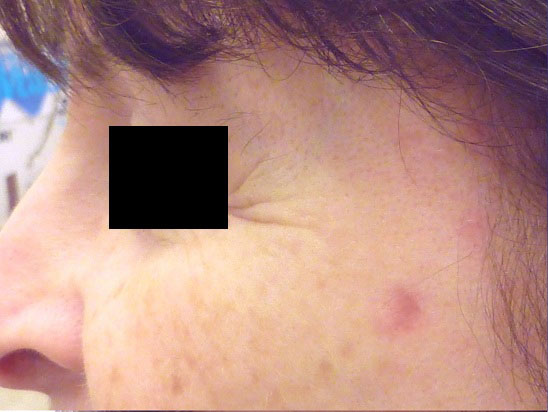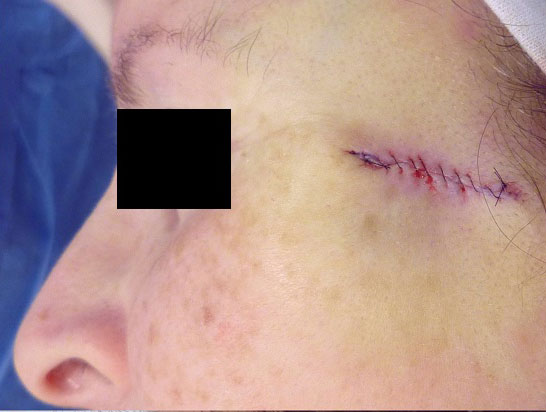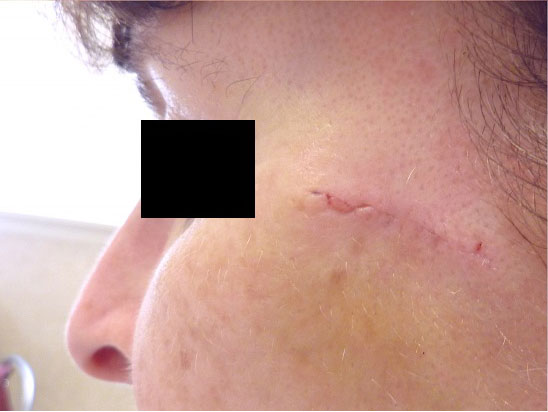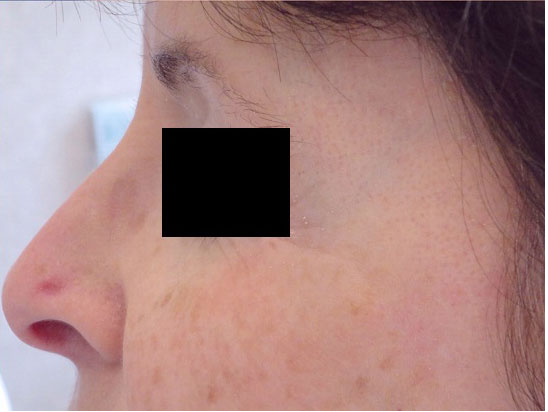An excision may be necessary if a previous biopsy has been read by the pathologist as “atypical” or abnormal, basal cell carcinoma, squamous cell carcinoma or melanoma. The purpose of the excision is to remove the remaining abnormal tissue in an effort to eradicate the atypical nevus or cancer. Occasionally benign growths such as cysts are removed in an effort to prevent infection, enlargement or for aesthetic purposes.




What to expect
- The dermatologist will explain the procedure
- The area will be cleansed with an antibacterial solution
- A small amount of anesthetic solution (Lidocaine) will be injected into the affected area
- The suspicious area is removed surgically
- Sutures are placed to close the wound. Typically the wound is closed in layers. The bottom layer is closed with stiches that dissolve over time. The outside layers are removed days to weeks after the procedure
Pre-operative and Post-operative instructions
In most circumstances, no pre-operative precautions are necessary. Continue your prescribed medications on the day of surgery including blood thinners.
Keep the initial pressure bandage on for 24-48 hours prior to removal. Do not allow the surgical site to get wet during the initial 1-2 days. If showering is necessary please shield the treatment area from the water or cover it with water proof bandaging. After the first 2 days, shower and wash the area with a mild cleanser such as Cetaphil or soap and water. After cleansing, apply Aquaphor ointment which is available over the counter and cover the surgical site with gauze and paper tape or band-aide. Many patients request to use Bacitracin, Neosporin or Polysporin for prevention of infections. These products have recently been cited as causes of contact dermatitis (allergic reactions) and are therefore discouraged. Your physician will advise you when to return for suture removal. This will usually be within 10-14 days of your procedure.
For optimal wound healing, refrain from any activities that apply tension to the wound for 6 weeks after your procedure. These activities include but are not limited to swimming, running, biking, lifting weights, yoga, vigorous walking, hiking, moving furniture etc. Additionally, strenuous activities during the first 48 hours after your procedure increase the risk of post-operative bleeding. It is normal to observe slight blood tinged staining on the bandage. If excessive bleeding occurs, hold pressure over the site for 20 minutes without peeking. This pressure typically stops the bleeding. If pressure does not stop the bleeding, call our on call provider at 203-259-7709 for further instructions. Avoid pain medications such as Ibuprofen after the surgery as these medications increase the risk of bleeding. Tylenol may be taken for discomfort.
During the healing process you may notice swelling or bruising around the surgical site. This is normal and typically resolves within 2 weeks. As the wound heals, you may experience a sensation of tightness, itching and sensitivity of the surgical site. If you develop severe pain that worsens daily, is not controlled by Tylenol, and you notice redness, swelling, warmth or drainage around the surgical site, make an appointment for an evaluation because these are signs of infection.
If desired, topical and cosmetic therapies such as lasers may be utilized to reduce or improve the appearance of scars once wound healing is complete. Speak with your physicians at Fairfield Dermatology about these alternatives.
Did someone forget to remove my sutures?
Weeks or even months after an excision, the dissolvable layer of sutures may begin to exit through the wound instead of being absorbed naturally by the body. This is not uncommon. Some patients are more prone to this phenomenon than others and in areas of high tension, occasionally the body “rejects” or “spits” the stitches out. While these rejected sutures are a nuisance, typically they have minimal if any effect on the final appearance of the scar. If you notice these sutures, they can be removed by your physician or you may simply wait until the sutures fall out naturally. Avoid the temptation to pull these sutures out on your own. If you notice significant redness, puss, or drainage from the wound site please return to the clinic for further evaluation. These may be signs of infection.

